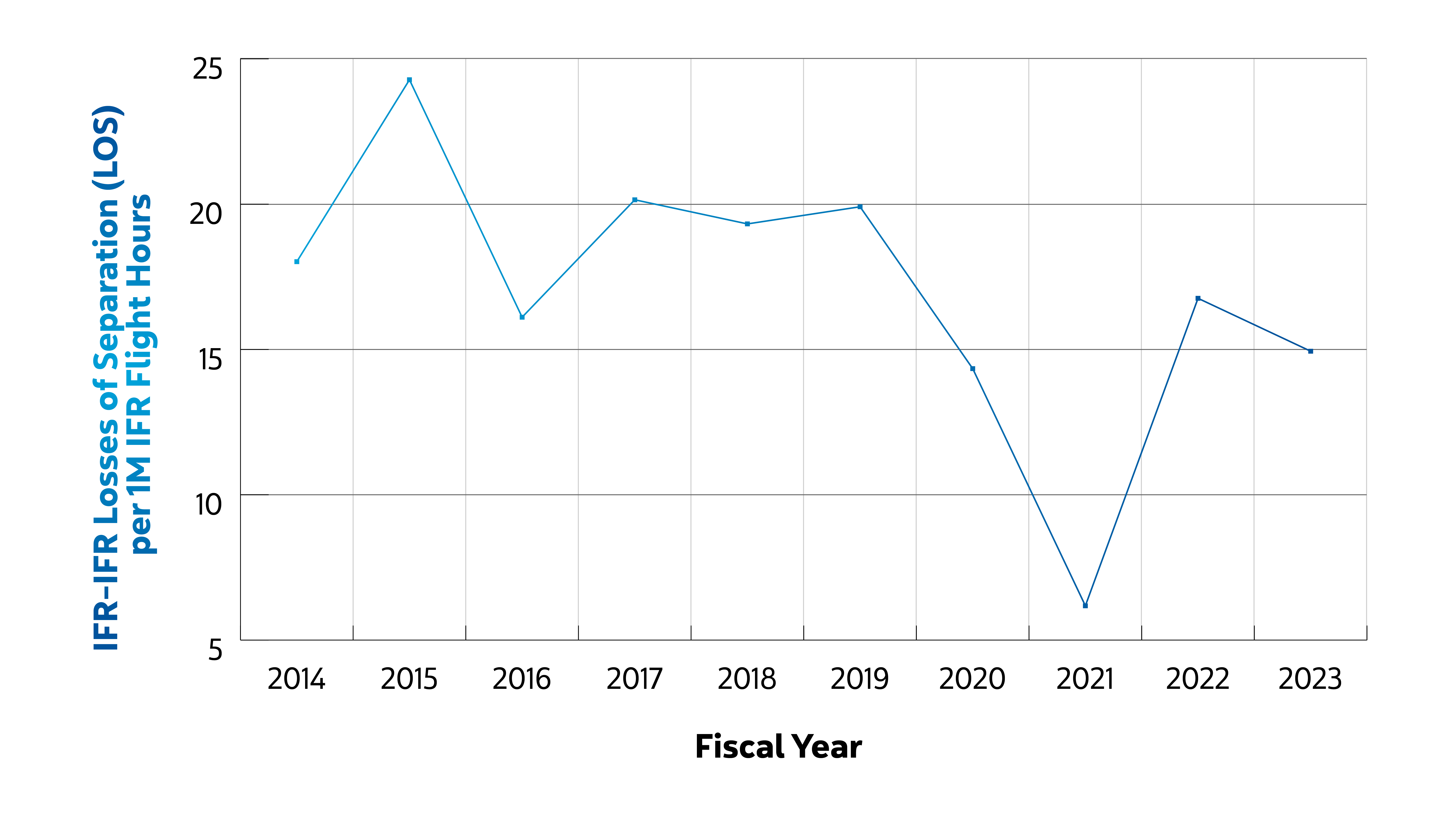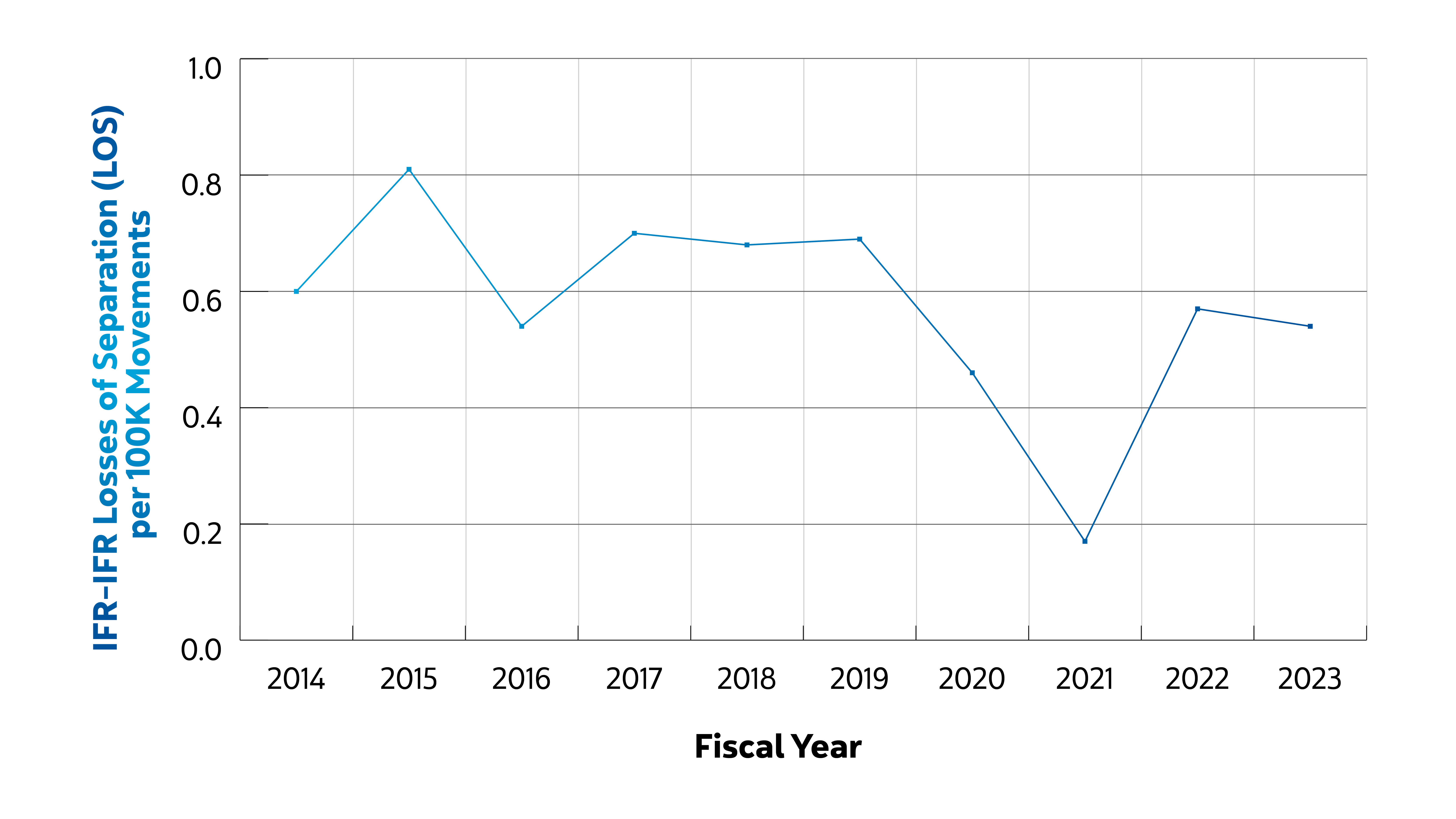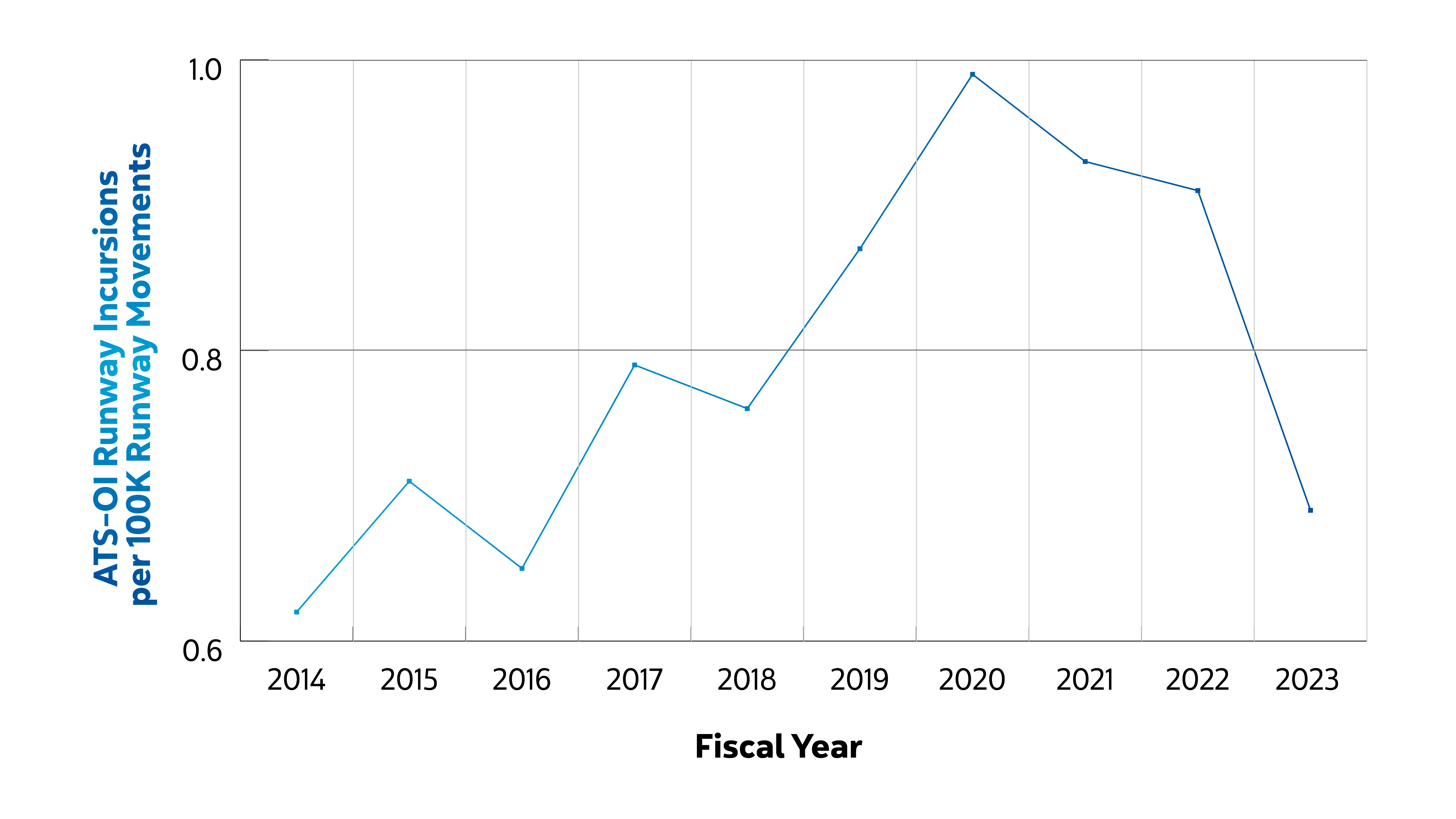







NAV CANADA has always been proud of its record for operational safety, which has consistently placed it among the top air navigation service providers (ANSP) in the world.
Our chief tool for guiding our safety management system (SMS) at NAV CANADA has always been our annual Safety Plan, which has provided the pillars for managing and improving operational safety risks. The Plan identifies the approved safety goals and initiatives each fiscal year, and every year we produce comprehensive reports on how we are doing as a company. This fiscal year, we had a safety risk completion rate of almost 95%, with 52 of the 55 active Safety Plan Initiatives having met all related initiative measures, exceeding our planned target of 90%.
The 2023 NAV CANADA Safety Plan was published in November 2022. At the same time, NAV CANADA released a companion document titled Navigating Safety, which aims to enhance transparency and build awareness about safety issues and goals across our ANS, as well as outline our priorities for strengthening our SMS.
Building on our strong commitment to safety, in 2023, NAV CANADA introduced our first long-term safety strategy. This strategy promotes a positive discussion on how, together, we can keep Canada’s skies safe today and tomorrow, and how we will shape the future of ANS safety management, domestically and abroad. It recognizes that it is people who keep Canada’s skies safe, and it is built around six strategic themes: safety culture, safety capabilities, human performance, safety partnerships, safety leadership and the future SMS.
In fiscal 2023, NAV CANADA maintained a strong safety performance as traffic continued to rebound from the impacts of the global pandemic. The rate of IFR-to-IFR (instrument flight rules) loss of separation was 0.54 per 100,000 movements, which remains below the Company’s benchmark rate of 1.0 losses per 100,000.


